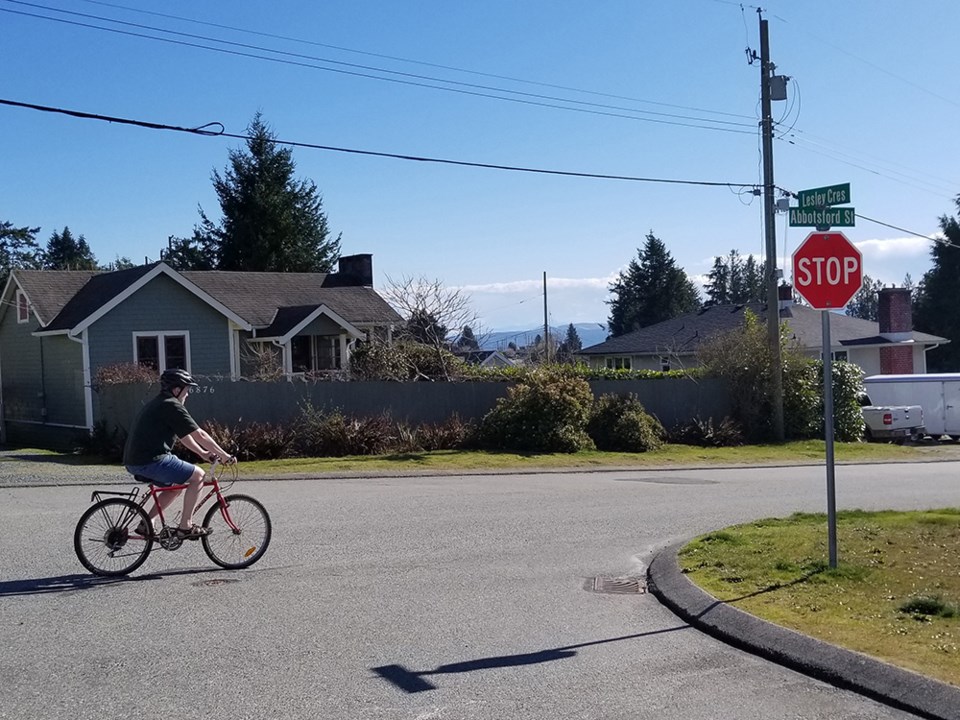City of Powell River has been awarded a provincial active transportation grant for development of an active transportation route along Sycamore Street and Maple Avenue in Townsite.
City manager of planning services Daniella Fergusson said the province has committed $357,000 through its active transportation infrastructure grants program. It funds up to 70 per cent of the project, according to Fergusson.
The remaining 30 per cent of $153,000 has been committed by Powell River Community Forest. Total project cost is $510,000.
Fergusson said the process for the transportation corridor started in 2019 and 2020 with the city’s parks and trails master plan.
“It looked at our existing parks and trails, and where future parks and trails should be,” said Fergusson. “It looked at off-road trails and one of the significant trails was something called the mid-level connector, which connects Brooks Secondary School to Powell River Recreation Complex.
“We received funds for that in a previous round of active transportation funding. It’s a $750,000-plus project.”
Fergusson said after the parks and trails master plan, the city undertook the bicycle network strategy. She said the parks and trails master plan looked at off-street corridors and the bicycle network strategy looked at the bicycle network on the streets.
“Maple Avenue and Sycamore Street were identified in that process as a neighbourhood bikeway, which is a road that doesn’t have a bike lane on it. It’s a road where there could be slow speeds so people can ride their bikes or use their mobility devices in traffic and feel safer because the speeds are lower.
“After the bicycle network strategy, the city then put the bicycle network into the official community plan and a schedule. We went through an engagement process for that and Maple and Sycamore are identified, now, in our official community plan, as neighbourhood bikeways.”
Fergusson said Townsite roads are a critical part of the city’s active transportation network. Staff knew there was going to be another round of funding and that it would not be around forever, according to Fergusson. Staff worked with a consulting firm to put together a plan at a level of detail sufficient to apply for grant funding, recognizing that the city would need to do more engagement if it was successful in procuring the grant for Townsite.
“We’re working hard to set dates for engagement at this very moment,” added Fergusson.
She said the vision for active transportation in the city is that someone can ride their bike from Wildwood to Grief Point in a way that is comfortable. She said the term used is triple A facilities, which means all ages and abilities.
“This connection on Maple, through to the mid-level connector, is an important part of that whole network,” said Fergusson. “In Townsite itself, we know that kids get to Henderson Elementary School and to Brooks Secondary School. This pathway also provides a way for kids to be active on their way to school, in a safer way.”
Fergusson said city staff members are excited about the prospect of adding to the active transportation network. She said the city is fortunate to have received grant funding.
There is still work to be done in active transportation in the city. Fergusson said there is a network map in the official community plan and staff will work internally and with the community to prioritize which improvements should be done next.
A participatepr.ca page is being worked on to provide more information to residents. Public engagement opportunities will also be posted there.
Powell River is one of 74 local and First Nations-led projects to help plan and build safe, inclusive active transportation connections that are moving forward in communities around the province.
“We know people will choose active transportation more often when there is safe and accessible infrastructure for it in their communities,” stated Rob Fleming, minister of transportation and infrastructure, in a media release. “We’re investing in new and improved infrastructure to give families more options, which will benefit generations of British Columbians and help us meet our climate goals.”



